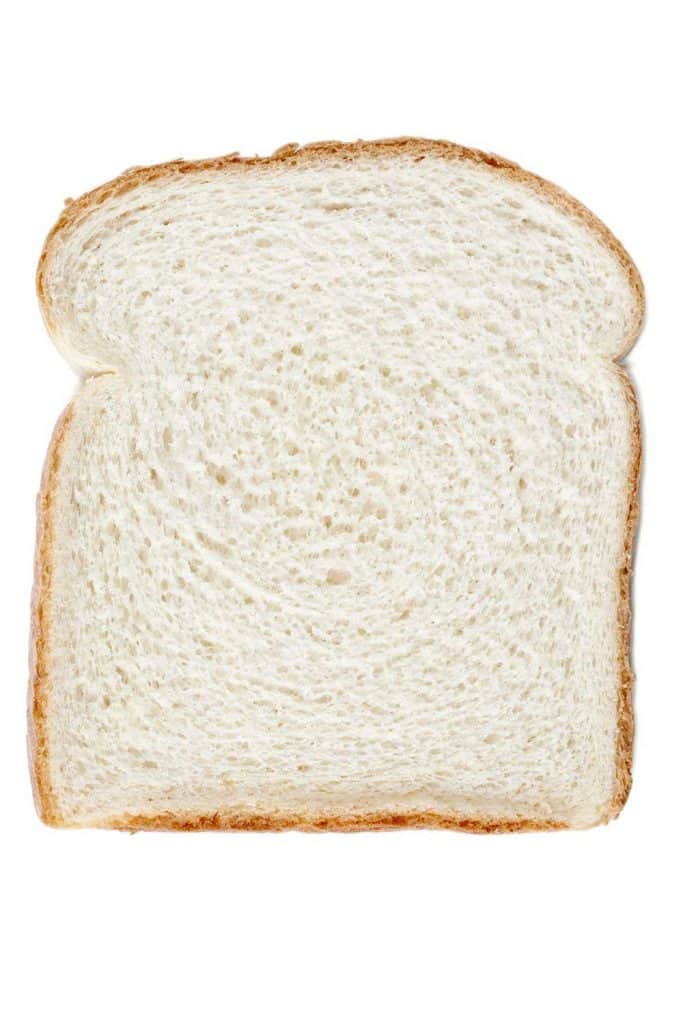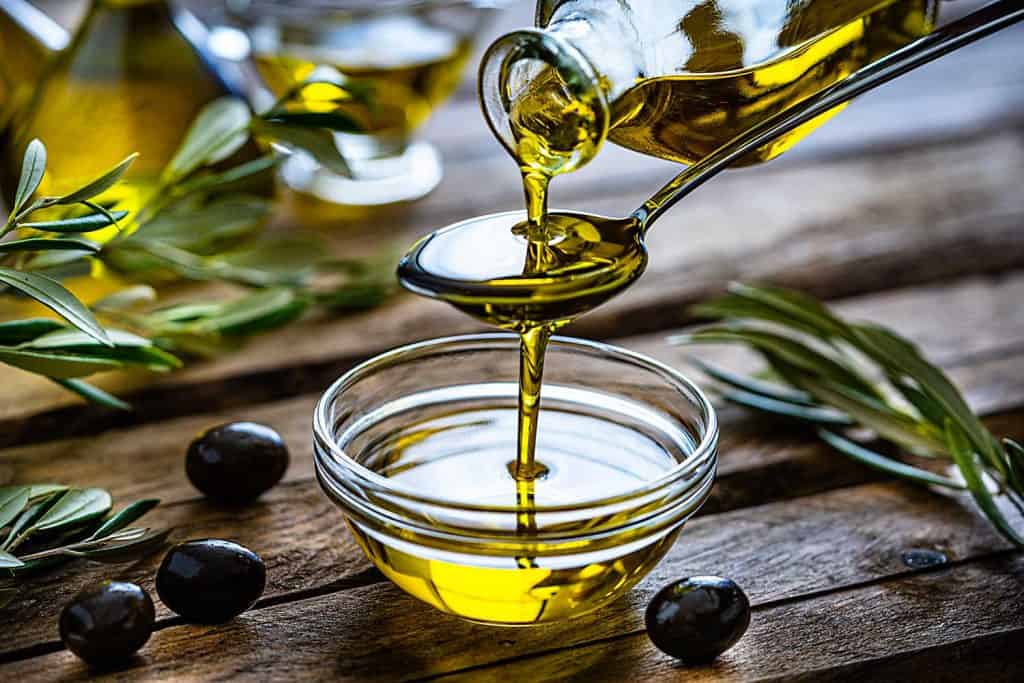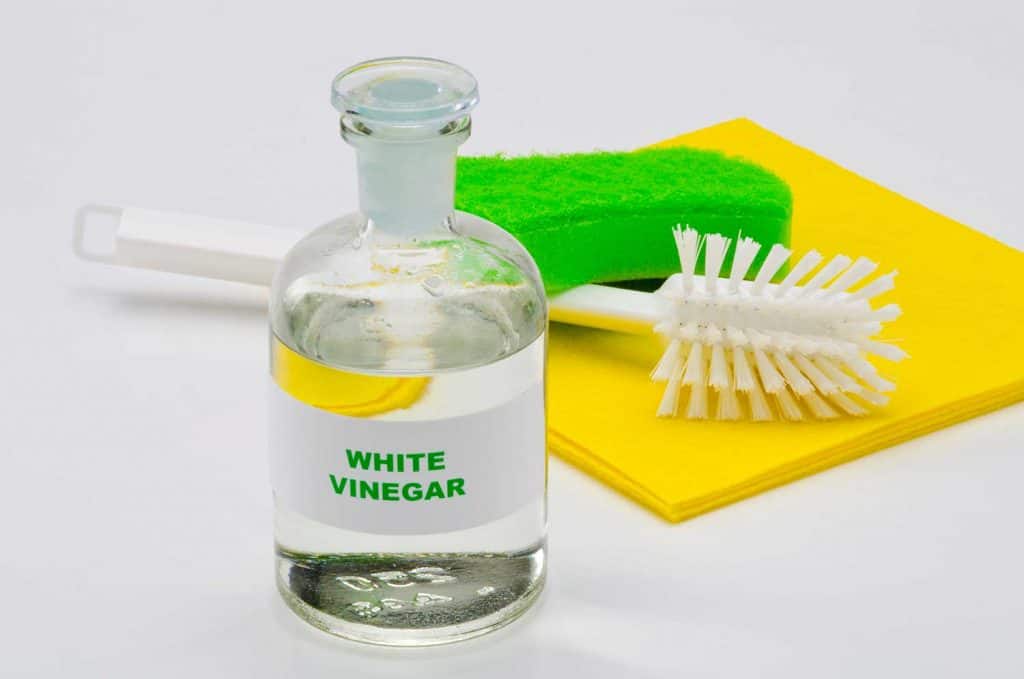If you’re like most people with a dressing table, you’ve no doubt had an accidental spill or smudge on the table’s surface. Makeup can be pretty messy if you’re not careful, and even the most cautious of us will have a slip up from time to time. Thankfully, we were able to dive into numerous professional cleaning resources that outline how to remove makeup from dressing tables.
Makeup can be easily removed from dressing tables. Whether the table is made from marble, wood, or has been painted, you will be able to use one of the following to aid in the cleanup:
- White bread
- Makeup remover
- Olive oil
- Vinegar
- Solvents
Now that you know what cleaning agents you can use to remove makeup from your dressing table safely, you might have other curiosities. Which method works best for lipstick removal? Can you get foundation out of wood? What is the best way to protect your vanity or dressing tabletop? To see what we’ve discovered, read ahead in this post.
Simple Makeup Removal Techniques
There are multiple ways to rid your dressing tabletop of unwanted makeup stains, spills, and smudges. Some work better than others for certain cosmetics, while others will be recommended for certain table surface materials. Let’s take a closer look at these various techniques and how to utilize them best.
White bread
If you have had a recent spill of any type of liquid cosmetics on your dressing table, cleanup is as simple as grabbing a slice of bread. Bread is soft and porous, like a sponge. Set the bread on top of the spill, and let it soak it up. After a few moments, flip the bread over and gently rub it on the surface of the table. This will allow the bread to soak up any remnants of the spill.
It’s important that you only use white bread for this method. Not only it is more porous than wheat, but it is also seedless. Breads with seeds in their slices can scratch wood surfaces or paint if you’re not careful.

Makeup remover
Should the makeup on your dressing table be dry, a trusted makeup remover can be used for blushes, eyeliner, and most other cosmetics. Pour your favorite brand on a soft cloth, and gently rub it onto the surface of the soiled area. Several applications might be necessary on more stubborn stains or for ones that have been soaked into a wooden surface.
To view this brand of makeup remover on Amazon, click here.
Olive oil
This cooking oil has been used as the base ingredient for homemade makeup removers, and it works great on the skin. Using it on wooden and painted surfaces will help clean up any dried makeup stain on your dressing table.
Carefully dab a piece of soft cloth into a small bowl that has a tablespoon of olive oil in it. Then gently rub the stained area of your dressing table with it. The oil will loosen the makeup and soak it into the cloth. Repeat if necessary. When the area is clean, use an un-soiled part of the same cloth with a soapy cleanser to remove any olive oil traces.

Vinegar
For extremely sticky makeup stains, consider using vinegar. The acidity in distilled white vinegar is great for loosening sticky and tacky substances from walls, hardwood floors, and tables. This cleaning method won’t harm painted surfaces, either. Using the same technique with some of the cleaning agents we mentioned above, simply soak a bit of the vinegar onto a soft cloth. Be sure to wipe the newly cleaned area with water when you’re finished so that you can rid the dressing table of the vinegar smell.

Solvents
As a last resort, you can use solvents to remove makeup stains that just won’t go away from the surface of your dressing table. With this method, you’ll want to wear cleaning gloves. You also will need to read the solvent’s directions thoroughly and make certain that you follow them to the letter. Some solvents will damage painted surfaces; others are bad for wood. Make sure that the one you are about to use won’t damage your dressing table’s top.
It’s best to try a test area on the dressing table before you attempt to clean any visible area with a solvent. Find a hidden spot and apply the solvent directly to it. After it dries, see if it has changed the appearance of the place you applied it. If it hasn’t, you’re good to go.
Popular solvents for this task include acetone, mineral spirits, and gamsol oil. Be sure you don’t mix any solvents together, and never use them in conjunction with another cleaning agent. Should you not be comfortable using a solvent, try using a glass cleaner or an all-purpose cleaner on the stained area.
How do you remove lipstick from wood?
Lipstick can be especially tricky, as this cosmetic has a greasy texture that smudges, making it difficult to remove. What happens if it gets on the surface of a wooden dressing table?
Use a dull object to gently remove the lipstick that hasn’t dried yet. Then, try using a Magic Eraser. This is soft enough to protect the wood but strong enough to remove most stubborn oils and greases.
Should the magic eraser method fail, don’t give up. Murphy’s Oil Soap is a great product for wooden surfaces, and applying a dab of it will remove stubborn lipstick stains on your table’s surface. Apply the Murphy’s Oil Soap to a soft cloth and dab, rub, and blot the soiled area. Repeat, if necessary.
How do you remove foundation from wood?
When cleaning any wooden surface, you have to be cautious when it comes to selecting the cleaner. The wrong one can damage or discolor wood floors and tabletops. So if you accidentally smeared foundation on a wooden dressing table, how can you safely clean it?
Distilled white vinegar is a great cleaning agent for this sort of mess. The vinegar’s acidity is strong enough to loosen old stains but still within a PH range that isn’t damaging to wood. Dampen a cloth with the white vinegar, and rub it gently onto the foundation stain. This may take several attempts, but this method is generally successful.
If this fails, use the method we outlined earlier in this post for cleaning lipstick stains from wood. A good Magic Eraser or Murphy’s Oil Soap will finish the job.
How to protect makeup vanity top
Spills and smudges are sure to happen, especially if you use your dressing table or vanity top regularly. You might be wondering if any precautions can be taken to protect the top against spills.
Thankfully, there are proven ways to make future spills easier to clean. Wooden surfaces can be sealed with an approved sealer. This will keep any cosmetics from seeping into the wood itself, enabling you to clean it much more quickly and simply.
Marble tops found on many vanities can also be protected by applying a sealer to the surface. A good marble sealer can be sprayed on and rubbed into place. After several minutes, you will need to blot up any spots that might have pooled. Within an hour, the sealer will have dried and cured.
To view this brand of marble counter sealer on Amazon, click here.
In Closing
While cosmetic stains on your dressing table can be an irritation, they can be easily dealt with. There are numerous ways you can safely remove makeup marks on any surface, some with products you will probably already have in your home. Wooden surfaces can be a little more tricky to clean, especially if they are soiled with lipstick or foundation. Distilled white vinegar is a great cleaning agent for this type of surface, as is Murphy’s Oil Soap.
If you take certain precautions, you can make cleaning a dressing table or vanity top much easier. Sealants can be easily applied to wood or marble tops, allowing for a much simpler clean up.

